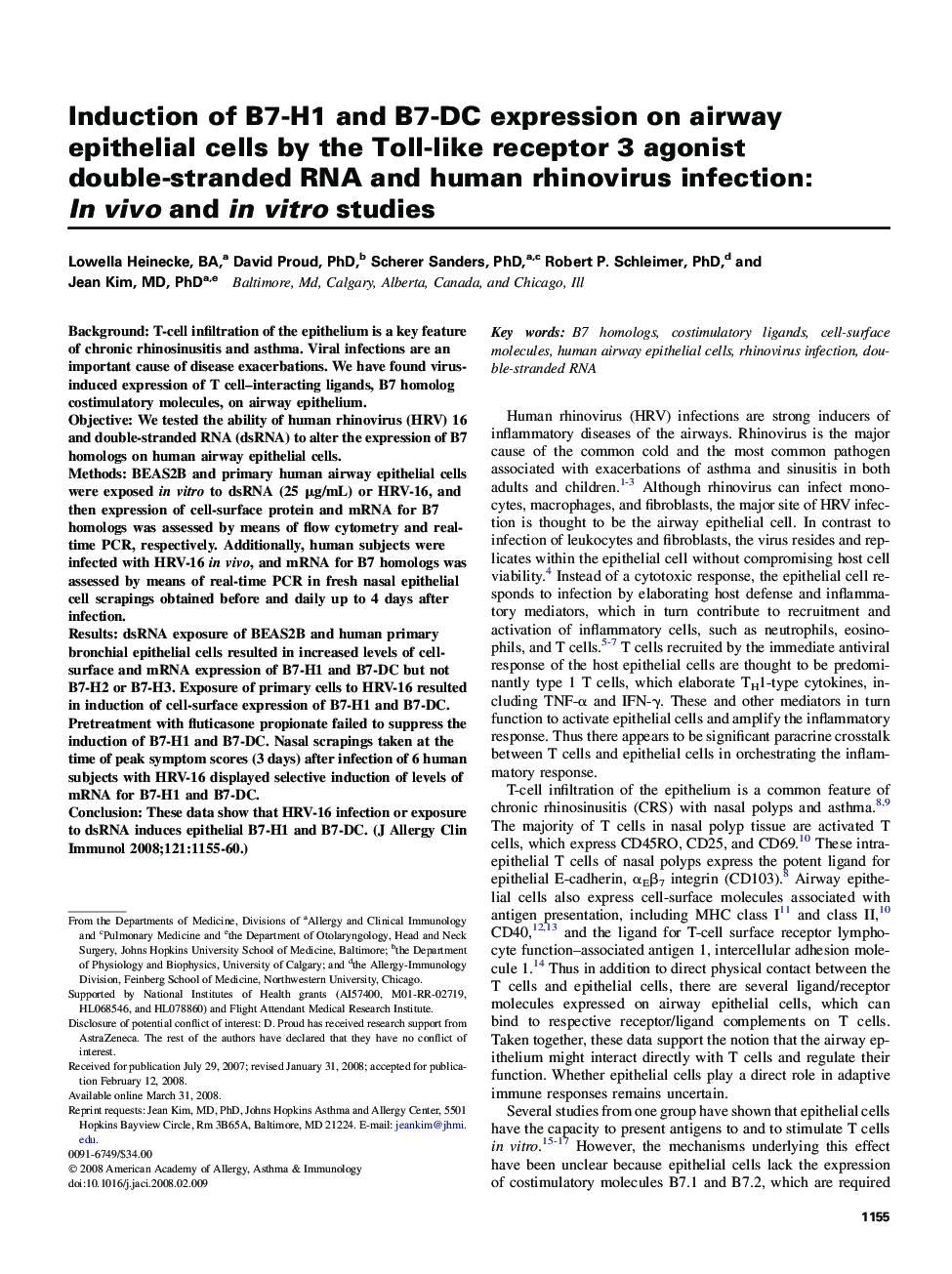| Article ID | Journal | Published Year | Pages | File Type |
|---|---|---|---|---|
| 3201197 | Journal of Allergy and Clinical Immunology | 2008 | 6 Pages |
BackgroundT-cell infiltration of the epithelium is a key feature of chronic rhinosinusitis and asthma. Viral infections are an important cause of disease exacerbations. We have found virus-induced expression of T cell–interacting ligands, B7 homolog costimulatory molecules, on airway epithelium.ObjectiveWe tested the ability of human rhinovirus (HRV) 16 and double-stranded RNA (dsRNA) to alter the expression of B7 homologs on human airway epithelial cells.MethodsBEAS2B and primary human airway epithelial cells were exposed in vitro to dsRNA (25 μg/mL) or HRV-16, and then expression of cell-surface protein and mRNA for B7 homologs was assessed by means of flow cytometry and real-time PCR, respectively. Additionally, human subjects were infected with HRV-16 in vivo, and mRNA for B7 homologs was assessed by means of real-time PCR in fresh nasal epithelial cell scrapings obtained before and daily up to 4 days after infection.ResultsdsRNA exposure of BEAS2B and human primary bronchial epithelial cells resulted in increased levels of cell-surface and mRNA expression of B7-H1 and B7-DC but not B7-H2 or B7-H3. Exposure of primary cells to HRV-16 resulted in induction of cell-surface expression of B7-H1 and B7-DC. Pretreatment with fluticasone propionate failed to suppress the induction of B7-H1 and B7-DC. Nasal scrapings taken at the time of peak symptom scores (3 days) after infection of 6 human subjects with HRV-16 displayed selective induction of levels of mRNA for B7-H1 and B7-DC.ConclusionThese data show that HRV-16 infection or exposure to dsRNA induces epithelial B7-H1 and B7-DC.
